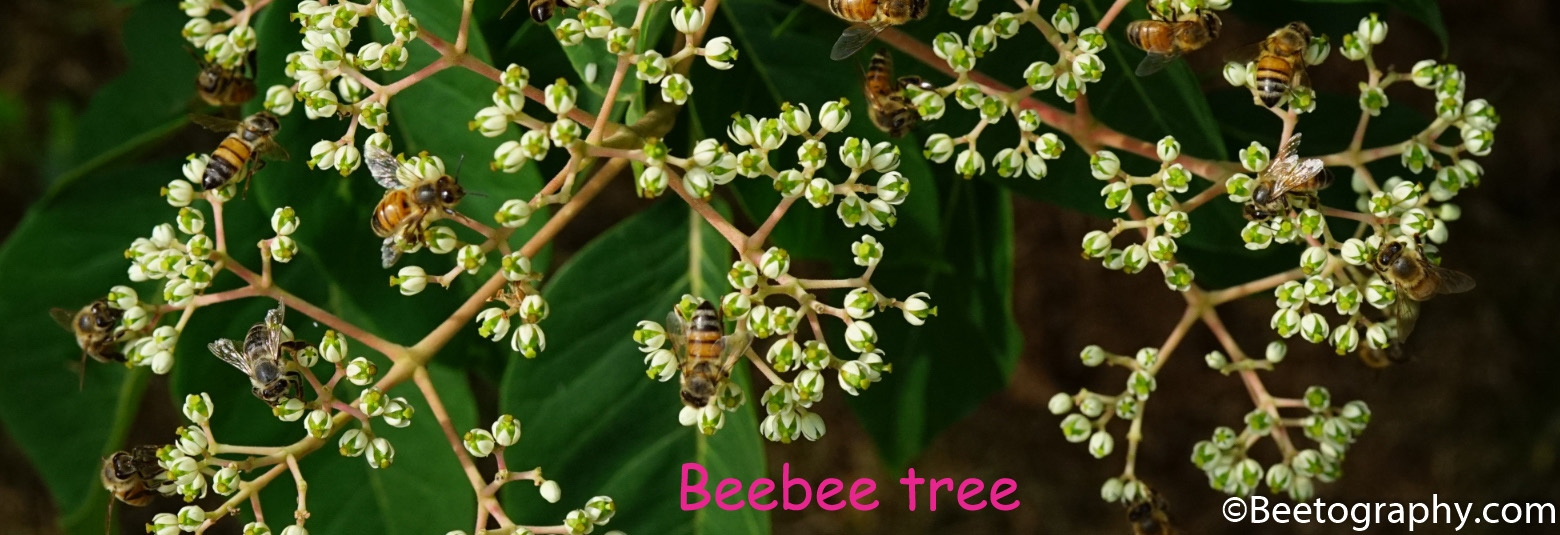| Family: | Anacardiaceae |
| Genus: | Rhus |
| Species: | R. typhina |
| Common name: | Staghorn sumac |
| ZBAS: | 8 |
I just noticed that this flower is basically done recently. It is difficult in summer (swarm control bee checking today!) to keep it up with flowers if I were to write on every flowers as they bloom! (still get red clover, alsike clover, sweet clovers, alfalfa, etc to cover!) .
Stag horn flowers are supposed to be dioecious (with female an male trees). But it seems everyone I saw would produce red seedpods, so they are all female? The pictures I took with bees a few years back seems to have complete flowers also (i.e. at least have pollen, but also produce seeds later in the season).
It is significant to beekeepers not only because it is attractive to honey bees, but also its seedpods are excellent as a smoker fuel! It also changes color in the fall. The flowers also feeds many native bees too and the seedpods provide food for many birds.
1. These photos were taken June 29, 2005. As I said it seems these flowers have both pollen and stigma. It is possible that the stigma might be sterile. I need to check the plant again (I remember it is by the road of Jolly near the College interaction) to see if it did not produce seedpods, then it will be male trees.

2. Beautifully colored pollen. Looks like she gets both nectar and pollen.

3. A bee in flight among the staghorn sumac flowers.

ZBAS*: Zach’s Bee Attraction Score, this is not supposed to be scientific but just based on my many years of observation and bee-shooting with my cameras. It might vary with location and season. 0: bees will never visit. 10: bees are crazy for it.
[Update for 2020, I noticed that it started blooming when I was trying to see if bees foraged on cattail, about a week ago. Now they are still blooming but perhaps past the peak].
Posted July 6, 2018
Updated July 1, 2020


To whom it may Concern-
I need your professional insight. I love bees, but I am highly allergic – I carry an epipen- after going into anaphylaxis shock and been on treatment (allergy immunotherapy therapy) for the last 6 years. I have bees/ hornets that move into my property each year. After being stung on two occassions in one week – 5 stings (3weeks ago), I am seeking a solution to my problem (I recovered okay after the latest stings). Maybe you can help?
I am looking for a device that I can put in my backyard that would track any flying insect and maybe give me a visual of say one hour’s flying insect activity. Is there something like this out there that you know of, that home owners can use? Any ideas will be much appreciated.
Thank you,
Harold Tack
Madison,WI
tackies@gmail.com